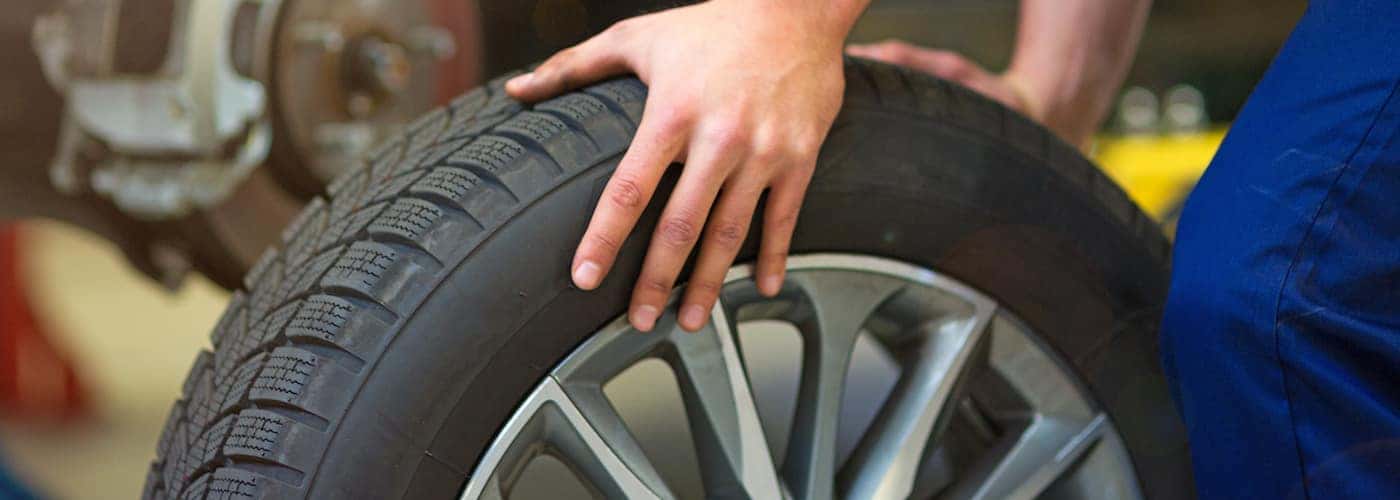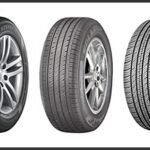The flashing tire pressure light means that there is an issue with your tire pressure monitoring system or you have a low tire pressure. Tire pressure is an essential aspect of your vehicle’s safety, performance, and fuel efficiency.
When your tire pressure is too low or too high, it can lead to numerous problems like reduced traction, premature tire wear, and decreased fuel efficiency. Modern vehicles come with a tire pressure monitoring system that alerts you when your tire pressure is low.
The flashing of the tire pressure warning light means that there is an issue with your tire pressure monitoring system or that you have low tire pressure. In this article, we will discuss in detail what the flashing tire pressure light means and how you can ensure proper tire maintenance to avoid any problems.

Credit: www.jaguarwestchester.com
Common Reasons For The Flashing Tire Pressure Light
Ensuring the correct tire pressure is essential for a safe driving experience, which is why modern car dashboards have a tire pressure light to warn drivers when pressure drops below the recommended level. However, sometimes, this warning light can flash, signifying that there’s an underlying issue that needs attention.
Insufficient Tire Pressure
Insufficient tire pressure is one of the main reasons why the tire pressure light on your car dashboard may start flashing. Here are a few key points to understand about this issue:
- Low tire pressure is often caused by changes in temperature, wear and tear, or an unnoticed puncture in one of the tires.
- Driving on low tire pressure can result in poor fuel economy, faster tire wear, and compromised handling and safety on the road.
- Inspect and adjust the tire pressures regularly to ensure they’re within the recommended limits specified in your car’s operator manual.
Overinflated Tires
If your tire pressure light is flashing rapidly, it could indicate that the tires are overinflated. Here are some essential points to remember about overinflated tires:
- Excessive air pressure can lead to uneven tire wear, reduced traction, and a rough ride.
- The primary cause of overinflated tires is filling the tires with too much air or leaving them inside the car for long hours in high temperatures.
- Always use a calibrated tire pressure gauge before adding air to your car’s tires to avoid overinflating them.
Cold Weather
Cold weather can significantly impact your tire pressure. Here are some crucial details to know about this issue:
- The cold temperatures cause the air inside the tire to contract, reducing tire pressure.
- Driving on underinflated tires in cold weather can lead to tire failure, which can be dangerous, particularly when driving at high speeds.
- It’s recommended to check the tire pressure when the tires are cold and keep them inflated to the amount stated in your car owner’s manual to prevent any issues when traveling in cold weather.
Overall, a flashing tire pressure light may signify an underlying issue that you need to address promptly. Regularly checking your tire pressure, and knowing what to look for, is essential for safe driving.
Consequences Of Ignoring The Flashing Tire Pressure Light
Blowout Risks
Ignoring the flashing tire pressure light in your vehicle may result in the worst possible scenario – a blowout. The following are the dangers of a blowout:
- Loss of control of your vehicle causing collision with other cars or objects.
- Being thrown off the road into the rough terrain.
- Result in injury to you, your passengers or other people in the vicinity.
Damage To Suspension And Brakes
Your car’s suspension and braking system require adequate air pressure to function correctly. However, if you ignore the flashing tire pressure light, your car may suffer from an inaccurate suspension and braking system, leading to serious problems, such as:
- Increased wear on suspension components.
- Poor handling and unstable ride.
- Overheating and damage to the braking system.
Increased Fuel Consumption And Expenses
When the tire pressure light flashes, it is an indication that the tires are under-inflated, meaning more force is required to keep them rotating. As a result, your vehicle’s fuel consumption will increase. The following outcomes can result from ignoring the flashing tire pressure light:
- Increased fuel consumption, leading to more expenses.
- A steady decline in gas mileage, leading to personal and environmental costs.
Tire Tread Wear And Need For Replacements Earlier Than Expected
Under-inflated tires can cause tire tread wear. Tires usually wear down naturally over time and need replacing after a certain period. However, if you ignore the flashing tire pressure light, your car’s tires will wear out prematurely, meaning you might have to replace them earlier than expected.
The following outcomes may result from ignoring the flashing tire pressure light:
- Uneven tire wear.
- Reduced safety due to worn or bald tires.
- The expense of premature tire replacements.
The flashing tire pressure light serves as an essential signal for drivers to take prompt action to avoid expenditure on significant car repairs. Therefore, ensure that you pay attention to the warning at all times.
How To Maintain Proper Tire Pressure
Why It’S Important To Check Tire Pressure Regularly
There are several reasons why it’s important to check tire pressure regularly. Here are some of the most crucial ones:
- Safety: Proper tire pressure ensures that your vehicle remains stable, has good traction and can stop safely in all driving conditions. Overinflated or underinflated tires can lead to blowouts, skids, and hydroplaning.
- Fuel efficiency: Correct tire pressure helps to maintain optimum fuel efficiency since it reduces rolling resistance, and therefore decreases the amount of fuel required to travel.
- Tire wear: Underinflated tires can wear out more quickly since increased contact with the road causes the tires to wear unevenly.
- Environmental impact: Properly inflated tires are better for the environment, as they reduce carbon emissions from your vehicle.
Different Ways To Measure Tire Pressure
There are several ways to measure tire pressure:
- Tire pressure gauge: These come in a variety of styles, including digital and analogue, and can be used at home or on-the-go. Ensure that you use the gauge correctly and follow the manufacturer’s instructions.
- Tire pressure monitoring system: Most newer cars come with a tire pressure monitoring system (tpms), which can provide a warning if the tire pressure is low. However, this system may not always be reliable, so it’s essential to check tire pressure manually.
- Service center: You can visit a service center, and they can check your tire pressure using specialized equipment.
When To Check Tire Pressure
It’s important to check your tire pressure regularly to maintain safety and efficiency. Here are some general guidelines on when to check your tire pressure:
- Every month: Check once a month since tires can lose about one psi (pound per square inch) per month naturally.
- Temperature changes: Tire pressure changes about one psi for every ten-degree temperature drop. When the weather changes drastically, check your tire pressure.
- Long distance travel: Before embarking on a long journey or road trip, check your tire pressure to ensure that you’re driving on safe and fuel-efficient tires.
- After impact: If your vehicle experiences an impact, such as hitting a pothole or curb, check your tire pressure, even if your tpms doesn’t indicate low pressure.
Where To Find The Recommended Tire Pressure
Finding the recommended tire pressure for your vehicle is essential to maintaining proper tire pressure. Here are some common ways to find this information:
- Owner’s manual: The owner’s manual will provide the manufacturer’s recommended pressure for your tires.
- Door panel: Check the inside of the driver’s door panel for a sticker that displays the recommended tire pressure.
- Gas tank flap: Some vehicles have a sticker inside the gas tank flap that displays the recommended tire pressure.
- Online resource: If you’re still having difficulty finding the recommended tire pressure for your vehicle, check with your vehicle manufacturer’s website or a reliable online tire resource.
Remember, maintaining proper tire pressure is crucial to keep you, your passengers, and other motorists safe. Regularly checking tire pressure and adhering to the recommended tire pressure guidelines ensures that your tires last longer and your vehicle runs efficiently.
Frequently Asked Questions Of What Does Your Flashing Tire Pressure Light Mean?
What Causes The Tire Pressure Light To Flash?
The flashing tire pressure light usually indicates a tire low on air pressure, a faulty tire pressure sensor, or an issue with the tire pressure monitoring system (tpms).
Is It Safe To Drive With A Flashing Tire Pressure Light?
It’s not safe to drive with a flashing tire pressure light because it may indicate that one or more tires are low on air pressure, which could cause a blowout or tire damage.
How Do I Reset The Flashing Tire Pressure Light?
The method of resetting the tire pressure light varies depending on the vehicle. It’s usually done from the car dashboard or infotainment system, and the specific instructions can be found in the owner’s manual.
Can A Flashing Tire Pressure Light Be A False Alarm?
In some cases, a flashing tire pressure light can be a false alarm triggered by a glitch in the tire pressure monitoring system (tpms). However, it shouldn’t be ignored without verifying the tire pressure.
Why Do I Need To Maintain Proper Tire Pressure?
Maintaining proper tire pressure helps maximize tire life, improve fuel efficiency, ensure safety, and enhance driving comfort. Low tire pressure can lead to tire damage, reduced fuel efficiency, and safety risks.
Conclusion
Seeing a flashing tire pressure light can be alarming and overwhelming for many drivers, but it’s important to understand its purpose and take action accordingly. Ignoring the warning sign can lead to unsafe driving conditions and even damage to your vehicle.
By understanding what the flashing tire pressure light means and taking action promptly to inflate or repair your tires, you can ensure a safer and smoother driving experience. It’s important to keep in mind that routine tire checks, including checking tire pressure and tread depth, can also help prevent the flashing tire pressure light from appearing in the first place.
As a responsible driver, taking care of your vehicle’s tires is an important part of regular maintenance. We hope this post has provided helpful guidance for what to do when your tire pressure light starts flashing and the importance of keeping your tires properly inflated.

Tamim Hasan is an experienced content strategist and automotive enthusiast specializing in SEO driven car care guides and practical vehicle maintenance tutorials. His goal is to help everyday drivers understand their cars better and make smarter repair decisions.










